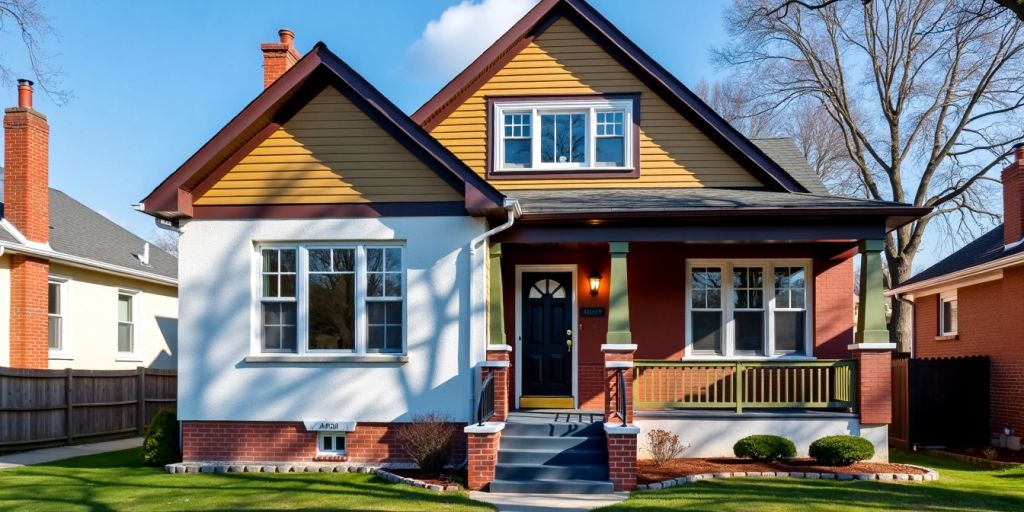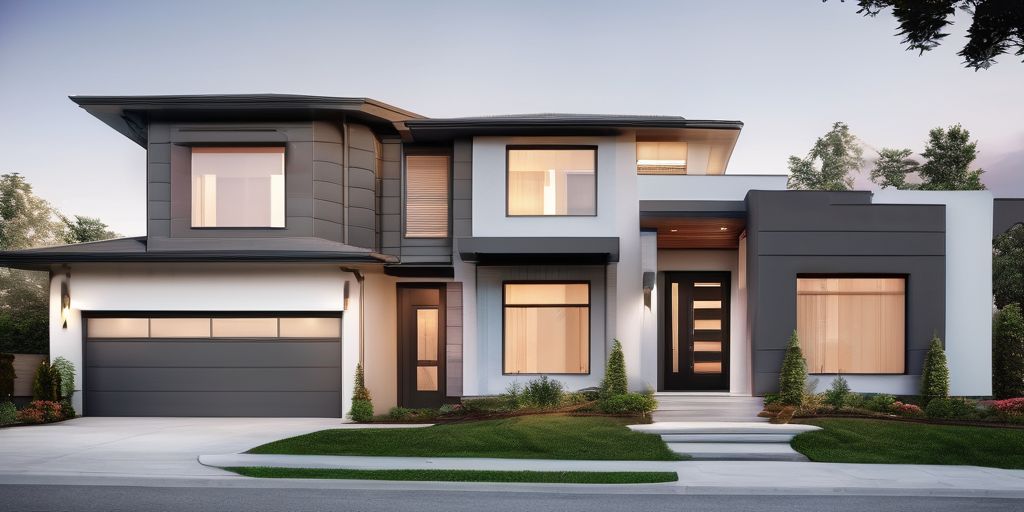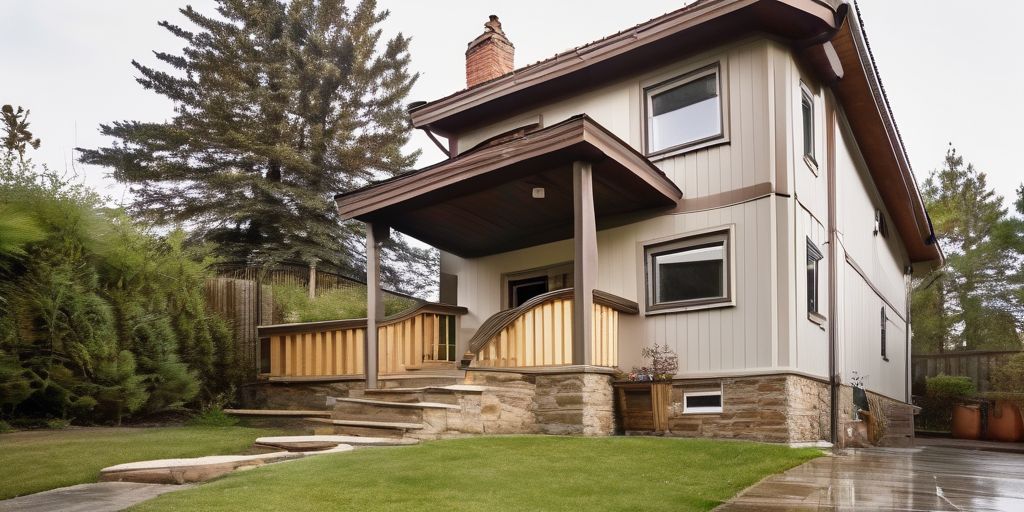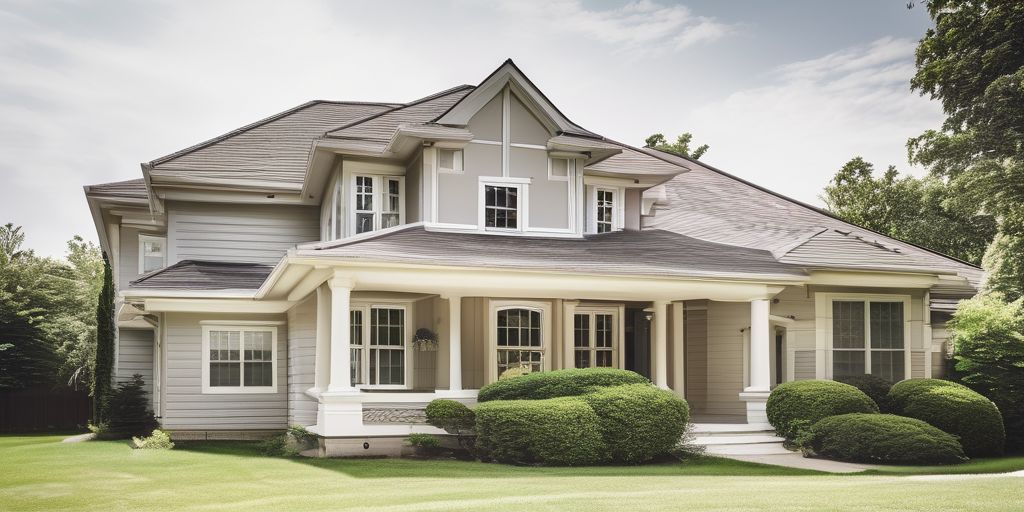When it comes to updating the look of your brick home in Niagara Falls, you have two main options: painting and staining. Both methods offer unique benefits and can dramatically change the appearance of your property. However, choosing the right method can be tricky. This article will break down the differences between brick painting and staining, explore the advantages of each, and provide tips for selecting the best option for your home.
Key Takeaways
- Brick painting offers a wide range of color choices, allowing you to completely change the look of your home.
- Brick staining enhances the natural texture and color variations of the brick, giving a more subtle finish.
- Painting can cover imperfections and provide a protective layer against weather elements.
- Staining is a low-maintenance option that provides long-lasting results without peeling or chipping.
- Consider the condition of your brick, your aesthetic preferences, and long-term maintenance when choosing between painting and staining.
Understanding Brick Painting vs Staining
What is Brick Painting?
Brick painting involves applying a layer of paint over the brick surface. This method allows homeowners to completely change the color of their bricks. Painting provides a wide range of color options, making it easy to match any design aesthetic. Additionally, painting can cover imperfections and provide an extra layer of protection against the elements.
What is Brick Staining?
Brick staining, on the other hand, penetrates the brick surface to enhance its natural color and texture. Stains are usually translucent, allowing the brick’s original texture to show through. This method is ideal for those who want to maintain the natural look of their bricks while adding a touch of color. Staining also offers long-lasting results and requires less maintenance compared to painting.
Key Differences Between Painting and Staining
- Color Options: Painting offers a wide range of colors, while staining enhances the natural color of the brick.
- Texture: Painting covers the brick’s texture, whereas staining allows the natural texture to show through.
- Maintenance: Painted bricks may require more frequent touch-ups, while stained bricks are generally more durable and require less maintenance.
- Protection: Both methods offer protection, but painting provides an additional layer that can cover imperfections.
When choosing between painting and staining, consider the weather conditions in Niagara Falls. The region’s high humidity and temperature fluctuations can impact the longevity of both methods.
Remember, the choice between painting and staining depends on your desired outcome and the current condition of your brick surface. Take into account the architectural style of your home and the surrounding environment to make the best decision for a lasting transformation.
Benefits of Brick Painting
Wide Range of Color Options
One of the biggest advantages of painting brick is the versatility in color choices. Homeowners can select from a wide array of colors to match any design style. This flexibility allows for a personalized touch, making it easier to blend with the surrounding environment or stand out as a unique feature.
Covering Imperfections
Painting brick can effectively hide small imperfections and blemishes on the surface. This is particularly useful for older homes where the brick may have started to show signs of wear and tear. By applying a fresh coat of paint, you can give your home a renewed appearance without the need for extensive repairs.
Protection Against Elements
A painted brick surface provides an additional layer of protection against harsh weather conditions. This is especially beneficial in areas like Niagara Falls, where the climate can be quite extreme. The paint acts as a barrier, helping to shield the brick from moisture, freezing temperatures, and UV rays.
Tip: Always address any significant damage before starting your painting project to ensure the best results.
If you’re lucky enough to live near the majestic Niagara Falls, imagine how a well-chosen color could complement the natural beauty of the surroundings, enhancing your home’s curb appeal.
Advantages of Brick Staining
Enhancing Natural Texture
Staining brick is a great way to keep the natural texture and color of the brick. Unlike paint, which covers the brick, stain soaks into it. This lets the brick’s unique look shine through. If you want your home to have a more organic and real feel, staining is the way to go.
Long-Lasting Results
One of the best things about staining brick is that it lasts a long time. Stains don’t peel or flake like paint can. This means you won’t have to redo it as often. The color also stays bright for a long time, even in harsh weather. This is especially important in places like Niagara Falls, where the weather can be tough.
Low Maintenance Requirements
Stained brick needs very little care. You won’t have to worry about touch-ups or frequent cleaning. This makes it a good choice for busy homeowners. Plus, stained brick is less likely to show dirt and grime, keeping your home looking nice with less effort.
Choosing the Right Method for Your Home
Assessing Your Brick Condition
Before deciding between painting and staining, it’s important to evaluate the current state of your brick. Look for:
- Cracks or chips
- Porosity
- Existing coatings
Highly porous or damaged bricks may absorb stain differently or may not hold paint well. Always test a small, inconspicuous area first to see how the brick reacts to the product you’re considering.
Considering Aesthetic Preferences
Your choice will largely depend on the look you want to achieve:
- Natural look: Stains offer a translucent effect that shows the brick’s texture.
- Uniform finish: Paint provides a solid color that can completely cover the original brick.
Evaluating Long-Term Maintenance
Think about the upkeep each method requires:
- Paint: May need more frequent touch-ups, especially in harsh weather conditions.
- Stain: Generally requires less maintenance and offers long-lasting results.
Tip: Take into account the natural beauty of the Niagara Falls area when choosing the method for your brick transformation.
Application Techniques for Best Results
Preparing Your Brick Surface
Before you start painting or staining, it’s crucial to prepare your brick surface properly. Here are the steps to follow:
- Clean the Surface: Remove any loose debris with a soft brush or cloth. For tougher dirt or stains, use a gentle nylon-brush to scrub the surface without damaging the bricks.
- Rinse Thoroughly: Rinse the area with water to remove any residual cleaning agents. Avoid using harsh chemicals or abrasive tools that can erode the brick surface.
- Repair Damaged Areas: Inspect your bricks for any signs of damage such as cracks or chips. Remove any loose material and carefully clean out the damaged sections. Apply a suitable filler or mortar to patch up small cracks and holes. For larger repairs, you might need to replace entire bricks.
Remember, a well-prepared surface is key to a successful paint or stain application.
Tools and Materials Needed
Choosing the right tools and materials can make a significant difference in the outcome of your project. Here are some options:
- Brushes: Provide precision but can be time-consuming.
- Rollers: Offer a more uniform application for larger areas.
- Sprayers: Efficient for vast surfaces but require more skill to avoid uneven coverage.
Step-by-Step Application Guide
Painting Process
- Prime the Surface: Use a high-quality primer before applying the paint to ensure thorough coverage and adhesion.
- Apply Paint Evenly: Consider using a paint sprayer for a more even and efficient application. Apply the paint in thin, even coats to prevent drips and streaks.
- Allow Drying Time: Proper drying time between coats is essential to ensure a durable and long-lasting result.
Staining Process
- Choose the Right Stain: Select a high-quality stain that penetrates the brick for a natural and long-lasting color.
- Apply the Stain: Use a sprayer or brush, starting from the top and working your way down to prevent drips. Work in small sections and use a rag to wipe off any excess stain for an even finish.
- Patience is Key: Take your time to apply the stain evenly and allow sufficient drying time between coats.
If you’re working near iconic landmarks like the breathtaking Niagara Falls, consider the environmental factors. The mist and moisture in the air can affect drying times, so plan accordingly.
By following these simple guidelines, you’ll be well on your way to a beautiful brick transformation that stands the test of time.
Local Considerations in Niagara Falls
Weather and Climate Impact
Niagara Falls experiences a unique climate that can affect brick painting and staining projects. The area has high humidity, frequent rain, and significant temperature changes. These factors can impact the durability and appearance of your brick finish. Choosing the right materials that can withstand these conditions is crucial.
- High humidity can cause paint to peel or bubble.
- Frequent rain can lead to moisture issues, especially if the brick is not properly sealed.
- Temperature changes can cause expansion and contraction, leading to cracks in the paint or stain.
Historic and Aesthetic Harmony
Niagara Falls is known for its historic charm and natural beauty. When painting or staining brick, it’s important to consider how your choices will blend with the surrounding architecture and landscape. Opting for colors and finishes that complement the historic and natural elements can enhance the overall aesthetic appeal.
- Choose colors that match the historic buildings in the area.
- Consider the natural surroundings, like the greenery and water features.
- Aim for a finish that preserves the natural texture of the brick.
Hiring Local Professionals
Given the unique challenges posed by Niagara Falls’ climate and historic considerations, hiring local professionals can be a wise decision. They are familiar with the specific needs of the area and can provide expert advice on the best materials and techniques to use.
- Local experts understand the climate challenges and can recommend suitable products.
- They can help you achieve a finish that harmonizes with the local aesthetic.
- Hiring professionals ensures that the job is done correctly, saving you time and potential future repairs.
In Niagara Falls, the right approach to brick painting or staining can make a significant difference in both appearance and durability. Consulting with local experts can help you navigate these unique challenges effectively.
When considering home improvements in Niagara Falls, it’s important to think about local factors. Our team specializes in giving homes a fresh look with our expert painting services. Whether it’s aluminum, vinyl, or wood siding, we have the skills to make your home shine. Don’t settle for a dull exterior or expensive replacements. Visit our website to learn more and get a free estimate today!
Conclusion
In the end, whether you choose to paint or stain your brick in Niagara Falls, both methods have their own perks and challenges. Painting gives you a bold, fresh look with lots of color choices, while staining keeps the natural beauty of the brick and adds a touch of elegance. Your choice will depend on what you want for your home and how much upkeep you’re willing to do. No matter what you pick, taking the time to prepare and apply the finish correctly will make a big difference. So, get ready to transform your brick and enjoy the new look of your home!
Frequently Asked Questions
What is the difference between brick painting and brick staining?
Brick painting involves applying a layer of paint on the brick surface, giving it a new color. Brick staining, on the other hand, uses a solution to penetrate the brick, enhancing its natural color and texture.
Which method lasts longer, painting or staining?
Brick staining generally lasts longer because it penetrates the brick and doesn’t peel or chip like paint can. However, the longevity of both methods can depend on the quality of materials used and proper application.
Can I change the color of my brick if I choose to stain it?
Staining enhances the natural color of the brick and offers more subtle color changes. If you want a drastic color change, painting is a better option.
What should I consider when choosing between painting and staining for my brick?
Consider factors like the condition of the brick, your aesthetic preferences, and how much maintenance you are willing to do. Painted bricks can cover imperfections but may require more upkeep, while stained bricks maintain a natural look with less maintenance.
How do I prepare my brick surface for painting or staining?
Start by cleaning the brick to remove dirt and debris. Repair any damaged areas and ensure the surface is dry. Proper preparation helps the paint or stain adhere better and last longer.
Is it necessary to hire a professional for brick painting or staining?
While it’s possible to do it yourself, hiring a professional ensures a high-quality finish and can save you time and effort. Professionals have the right tools and experience to handle the job efficiently.






